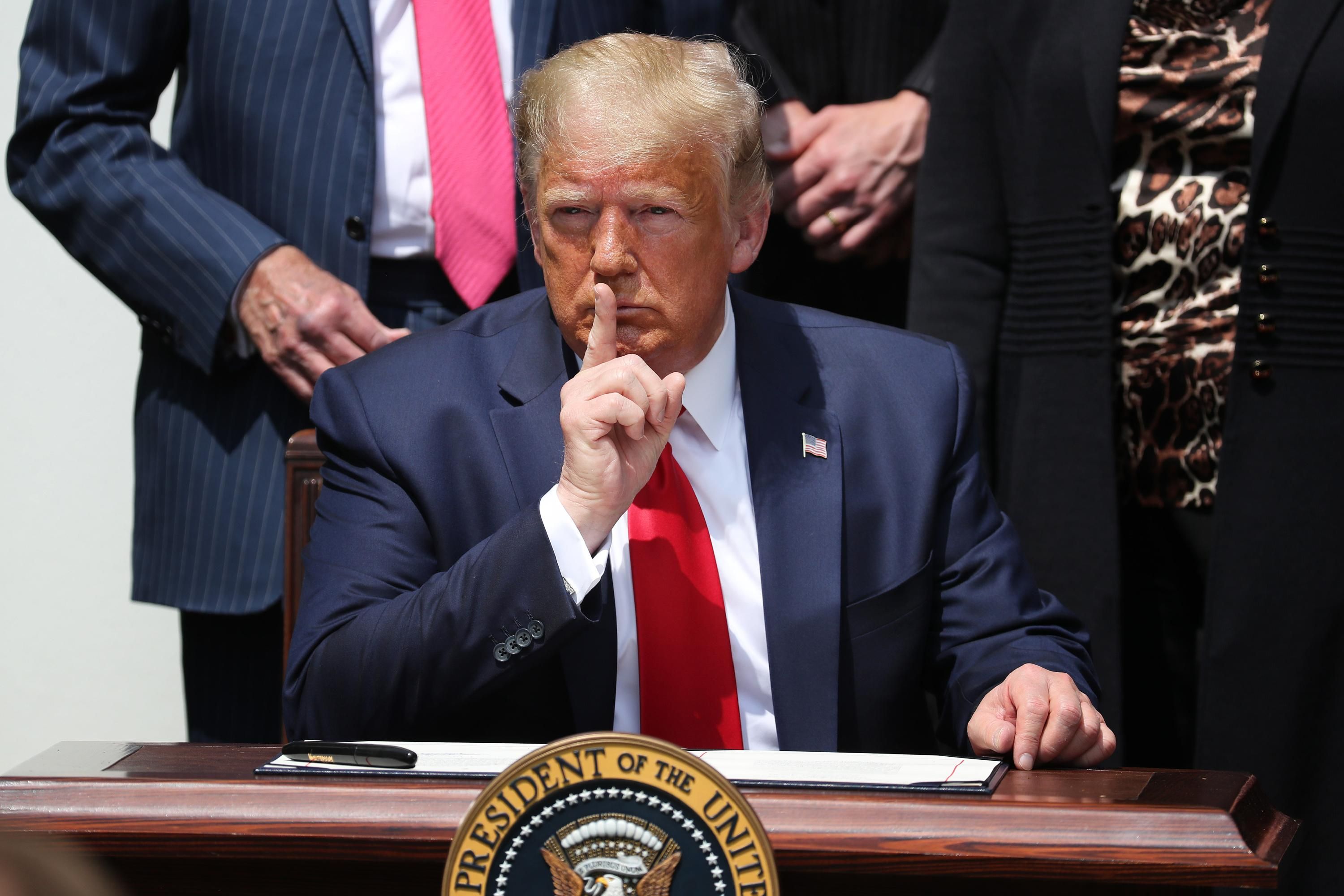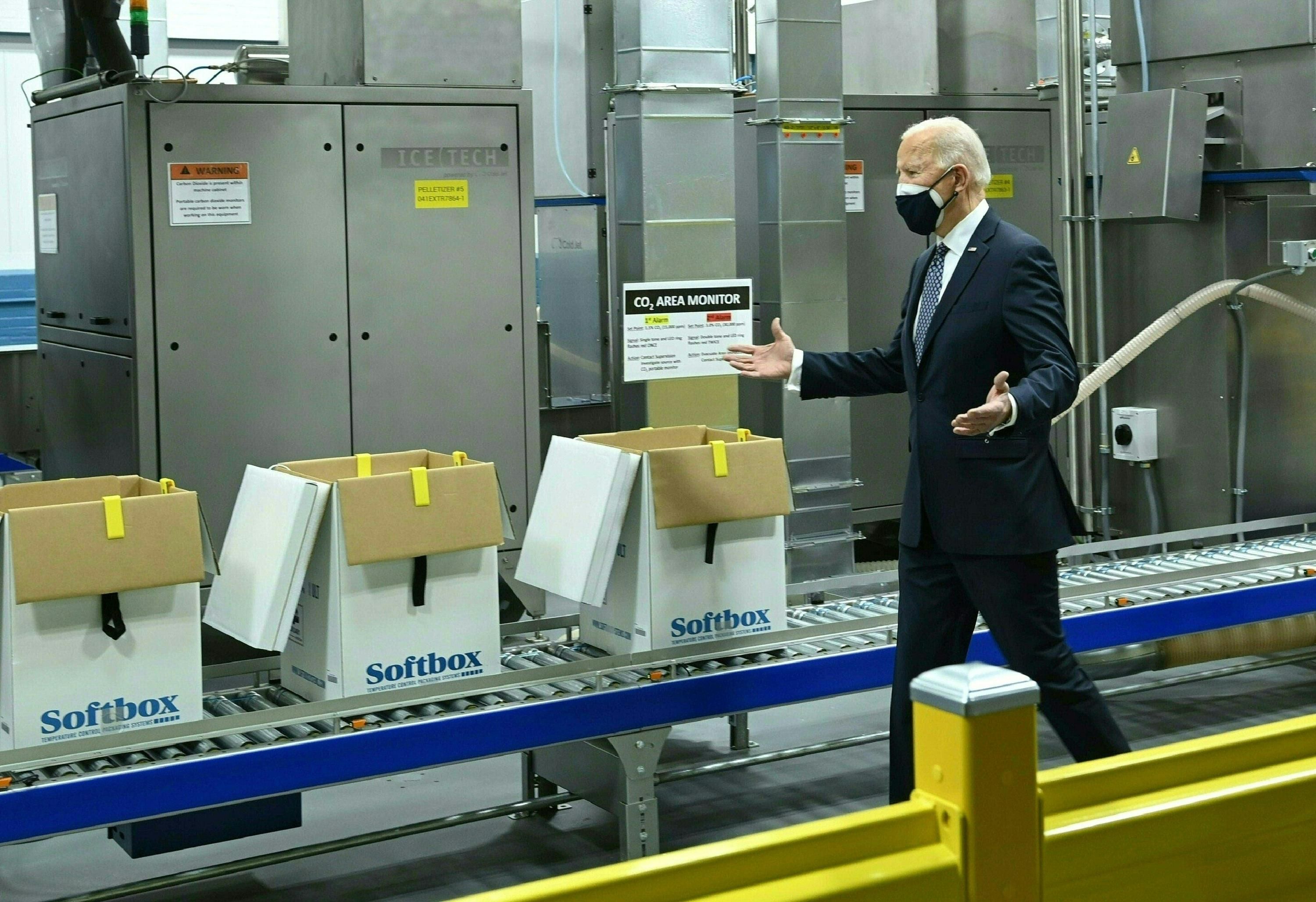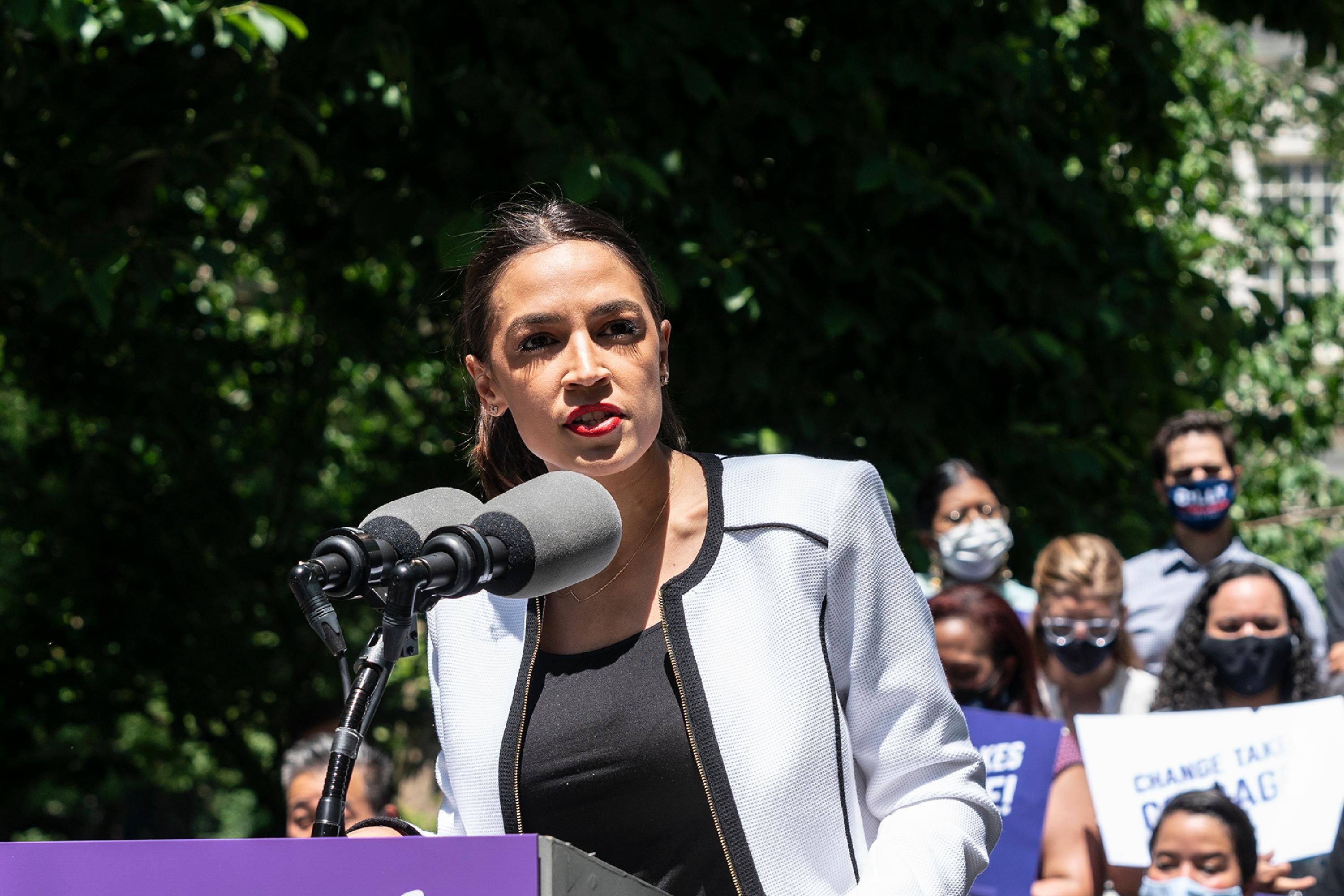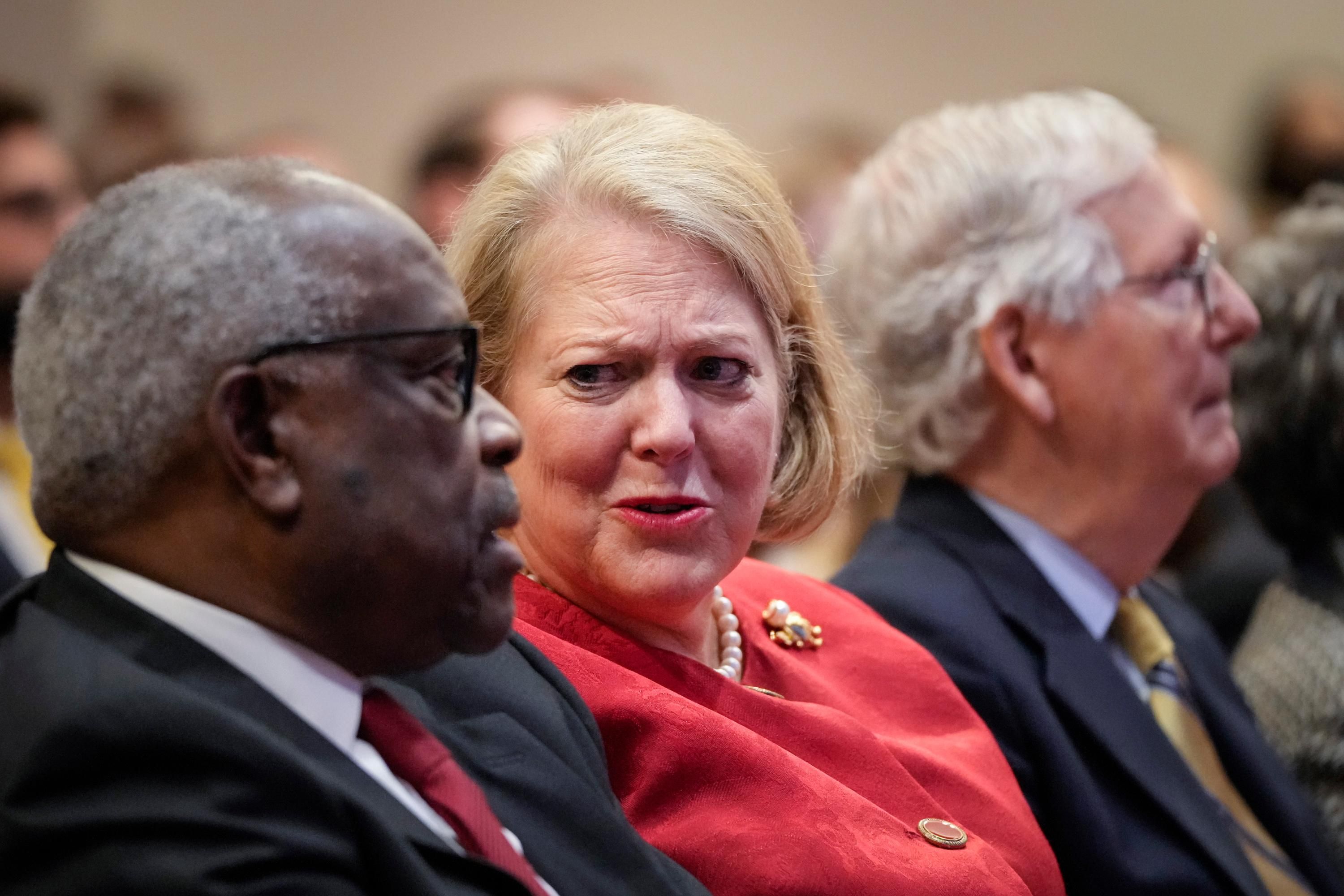"While Americans struggle with high gas prices, these companies are doing victory laps, showering their already wealthy executives and shareholders with billions in stock buybacks and bonus compensation," said one watchdog group. "They should be ashamed."
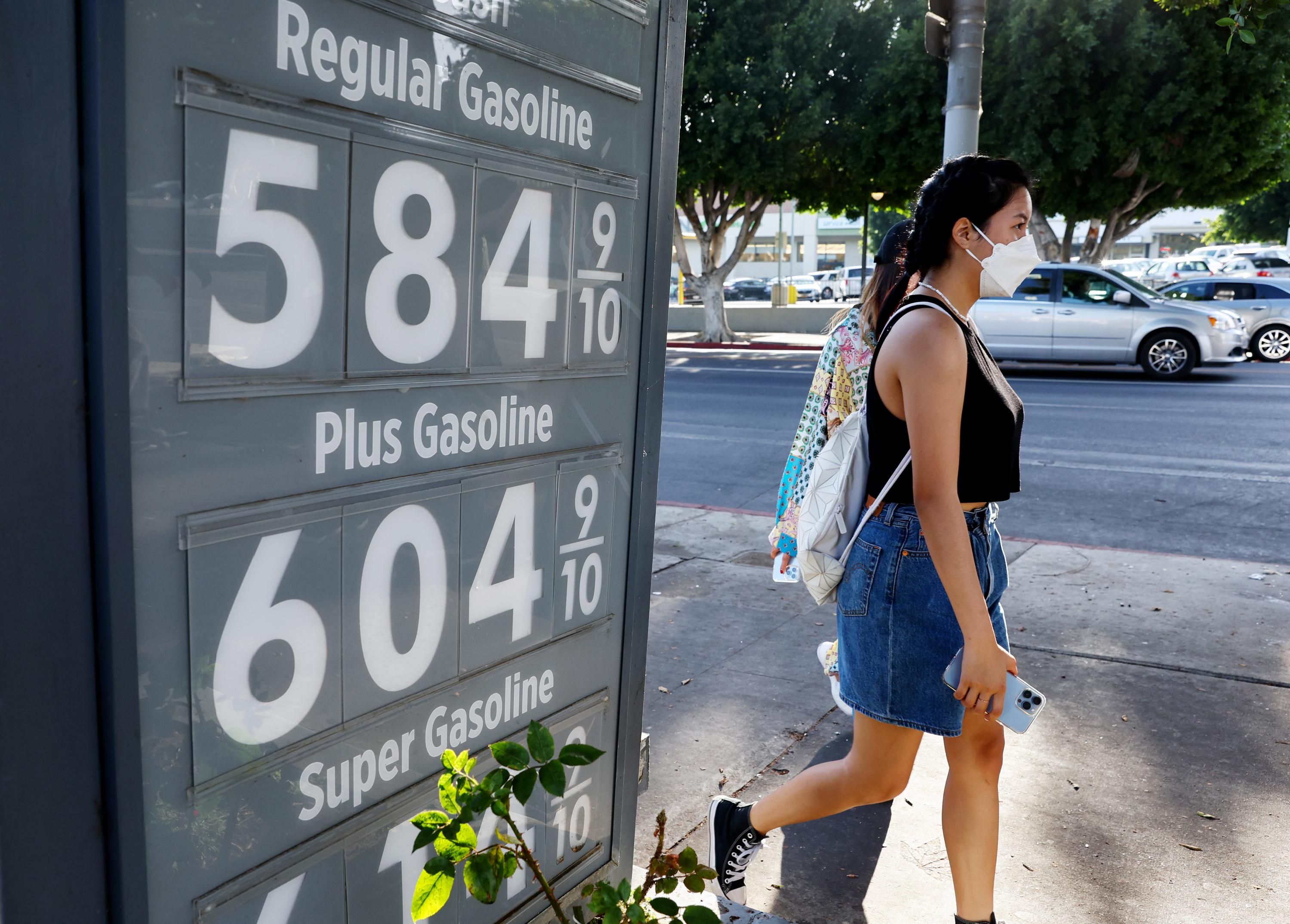
A pedestrian walks past a gas station advertising gas prices on March 25, 2022 in Los Angeles, California. (Photo: Mario Tama/Getty Images)
JULIA CONLEY
As people across the United States face record-high gas prices—compounded by rising grocery bills and prices for other essentials—executives at three major oil companies are refusing to testify before Congress about what their firms could do to lessen the burden on U.S. households, leaving Democratic lawmakers and consumer advocates to condemn the companies for profiting amid lower and middle-class people's financial pain.
Rep. Raúl M. Grijalva (D-Ariz.), who chairs the House Natural Resources Committee, had invited the CEOs of EOG Resources Inc., Devon Energy Corp. and Occidental Petroleum Corp. to testify next week, only to be rebuffed Tuesday by the executives, who have personally profited off gas prices which averaged $4.24 per gallon on Monday.
"I invited these companies to come before the committee and make their case, but apparently they don't think it's worth defending," Grijalva said in a statement Tuesday. "Their silence tells us all we need to know—that cries for more drilling and looser regulations are nothing more than another age-old attempt to line their own pockets."
Lawmakers including Grijalva have argued that the companies could easily stabilize gas prices immediately, considering the billions of dollars in profits EOG Resources, Devon Energy, and Occidental Petroleum raked in last year.
Instead, watchdog group Accountable.US said Tuesday, Occidental Petroleum planned to use $3 billion for stock buybacks in 2022, while Devon Energy gave nearly $2 billion in share buybacks and dividends to shareholders last year. EOG Resources gave CEO William R. Thomas a $150,000 raise in 2021, making his total compensation $9.8 million.
"We want to work with them to reduce gas prices, but it seems as though they're too busy taking in record profits while refusing to pass savings on to consumers," said Rep. Mike Levin (D-Calif.), a member of the Natural Resources Committee.
Rep. Mark Pocan (D-Wis.) sarcastically expressed empathy for the "spineless" executives who refused to testify before Grijalva's committee.
"It is hardly surprising that EOG Resources, Devon Energy, and Occidental Petroleum are dodging accountability by refusing to testify in Congress," said Kyle Herrig, president of watchdog group Accountable.US. "While Americans struggle with high gas prices, these companies are doing victory laps, showering their already wealthy executives and shareholders with billions in stock buybacks and bonus compensation. They should be ashamed."
Grijalva noted that while the industry has used the Russian invasion of Ukraine to call for even more freedom to drill for oil and gas, fossil fuel companies hold leases on 26 million acres of land.
"These same companies already have over 9,000 approved permits they can use whenever they want," Grijalva told Public News Service on Tuesday. "And the very companies with thousands of acres of existing leases and hundreds of unused permits are the same ones shouting that they need more land for drilling."
According to Accountable.US, the three companies refusing to speak to Grijalva's committee "are among the top leaseholders of public lands oil and gas leases with 4,114 leases covering nearly 1.5 million acres."
Companies including BP, Chevron, Exxon Mobil, and Shell have also been invited to testify at upcoming hearings on their business practices and impacts on consumers. In February, board members from the four companies refused to testify about the firms' climate pledges.
Senate Majority Leader Chuck Schumer (D-N.Y.) noted last week that oil prices dropped in recent days, but no savings were passed onto consumers.
"The bewildering incongruity between falling oil prices and rising gas prices smacks of price gouging and is deeply damaging to working Americans," Schumer said last week. "The Senate is going to get answers."
Our work is licensed under Creative Commons (CC BY-NC-ND 3.0). Feel free to republish and share widely.
